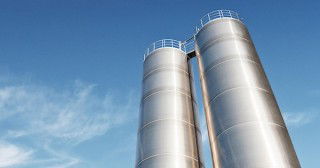The fine microstructure of cement clinker provides a number of clues relating to the state of the process which made it, including the temperature, the chemistry, the fuel type and quality, the thermal profile through the process and the efficiency of cooling. Microscopic and macroscopic analysis can, in some cases, differentiate between different cement kiln types. More usefully, knowing details of the process which made the clinker is of immense value in interpretation of the significance of various features.
It sometimes happens that a clinker sample will arrive at the microscopy laboratory with a request for microscopic analysis and no further information about the origin of the sample except perhaps the country where it was produced. In this case an examination can be undertaken and some basic recommendations made for example regarding the presence of belite clusters due to coarse silica or to the presence of indications of reducing conditions in the burning zone. However, without knowledge of the raw materials, fuels and process type the conclusions will generally report what the plant already knows, such as an approximate LSF, SR and AF and an estimate of free lime. Crystal size measurement can be used to comment on potential quality, but recommendations for improvement are difficult without knowledge of the plant. Some features of clinkers vary with process type, raw materials and fuels, and some examples are examined below.
